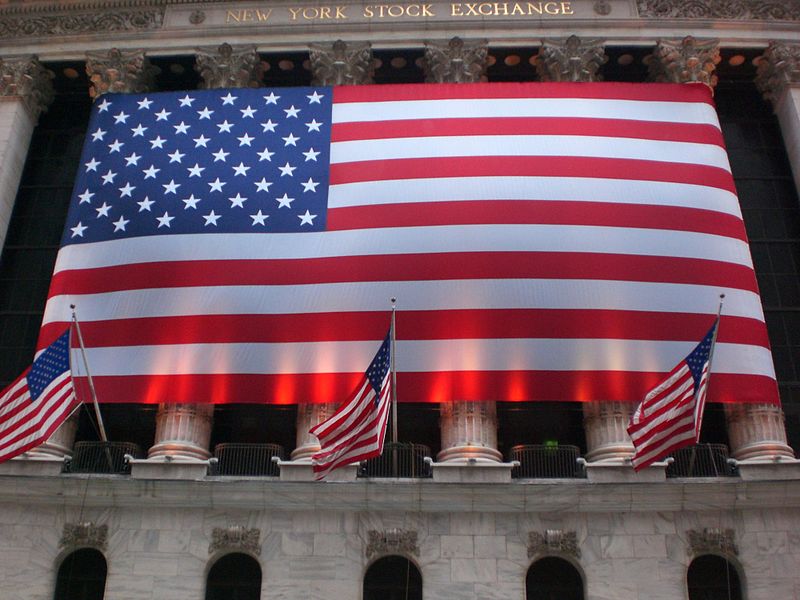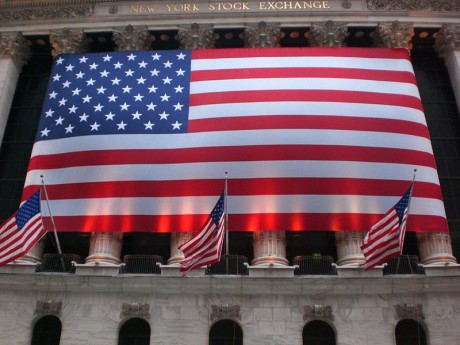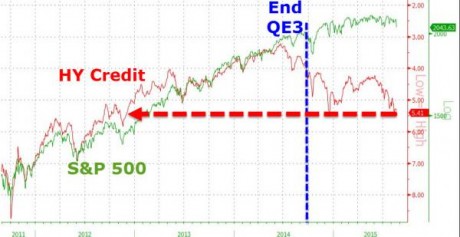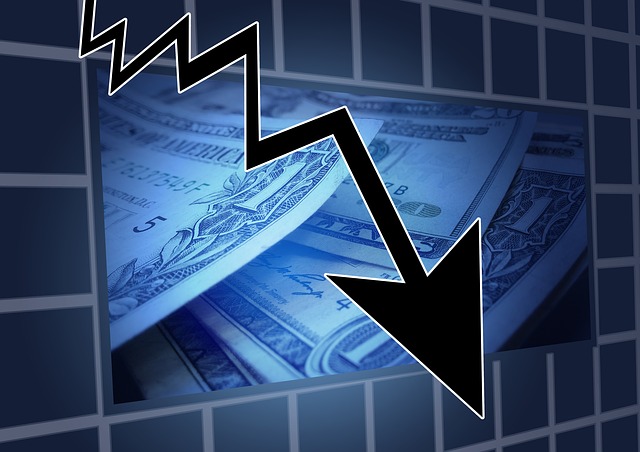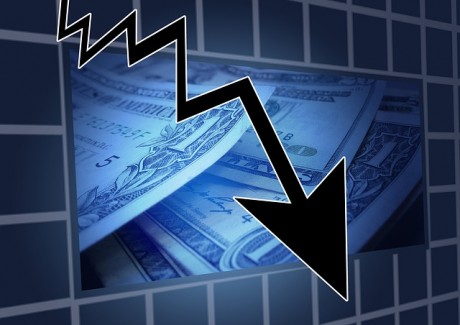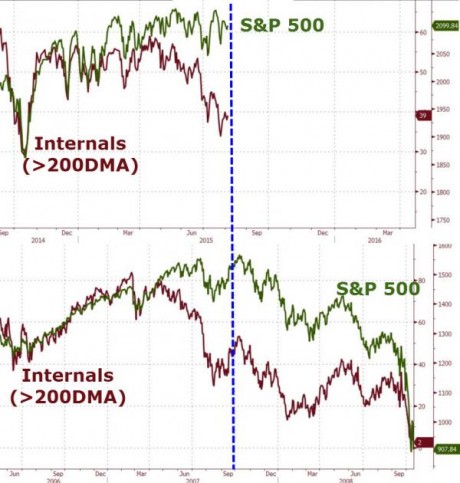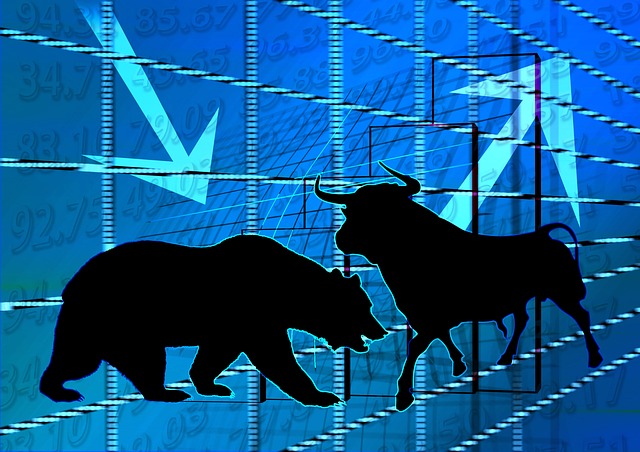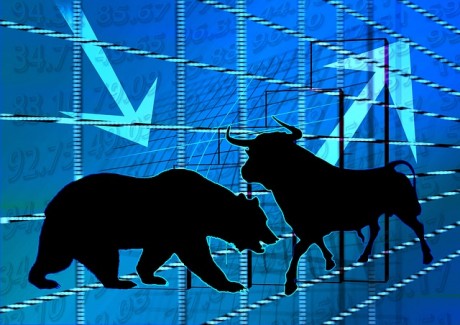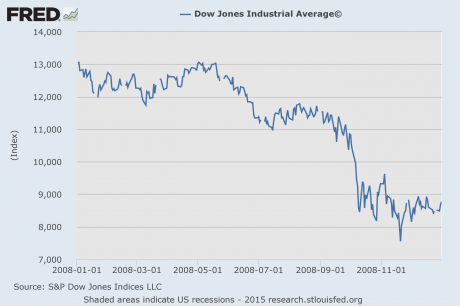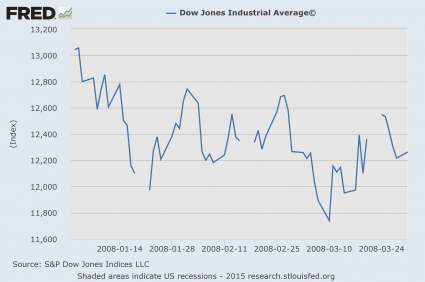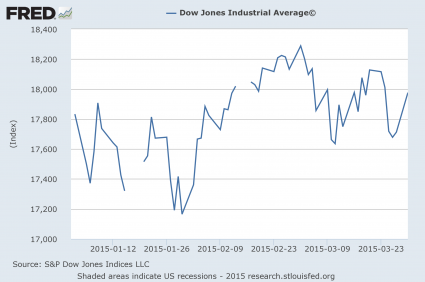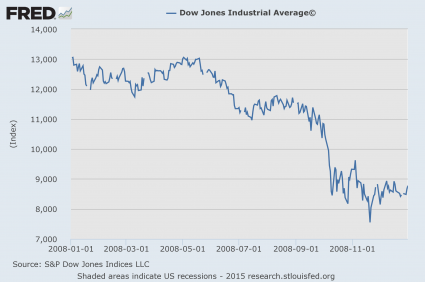 This is exactly the type of market behavior that we would expect to see during the early stages of a major financial crisis. In every major market downturn throughout history there were big ups, big downs and giant waves of momentum, and this time around will not be any different. As I have explained repeatedly, markets tend to go up when things are calm, and they tend to go down when things get really choppy. During a market meltdown, we fully expect to see days when the stock market absolutely soars. Waves of panic selling are often followed by waves of panic buying. As you will see below, six of the ten best single day gains for the Dow Jones Industrial Average happened during the financial crisis of 2008 and 2009. So don’t be fooled for a moment by a very positive day for stocks like we are seeing on Tuesday. It is all part of the dance.
This is exactly the type of market behavior that we would expect to see during the early stages of a major financial crisis. In every major market downturn throughout history there were big ups, big downs and giant waves of momentum, and this time around will not be any different. As I have explained repeatedly, markets tend to go up when things are calm, and they tend to go down when things get really choppy. During a market meltdown, we fully expect to see days when the stock market absolutely soars. Waves of panic selling are often followed by waves of panic buying. As you will see below, six of the ten best single day gains for the Dow Jones Industrial Average happened during the financial crisis of 2008 and 2009. So don’t be fooled for a moment by a very positive day for stocks like we are seeing on Tuesday. It is all part of the dance.
At one point on Tuesday, the Dow was up over 400 points, and many of the talking heads on television were proclaiming that the stock market had “recovered”. This is something that I predicted would happen yesterday…
And if stocks go up tomorrow (which they probably should), all of those same “experts” will be proclaiming that the “correction” is over and that everything is now fine.
No, everything is not “fine” now. The extreme volatility that we are witnessing just tells us that more trouble is coming. Early on Tuesday the market was “burning up energy” as short-term investors sought to “buy the dip”. But now that wave of panic buying is subsiding and the Dow is only up 240 points as I write this.
Overall, the Dow is still down more than 2,200 points from the peak of the market. Even though I specifically warned that a market crash was coming, I didn’t expect the Dow to be down this far in late August. Even after the “rally” we witnessed today, we are still way ahead of schedule.
The truth is that what we have seen so far is just the warm up act.
The main event will unfold during the months of September through December, and right now most people could not even conceive of the things that we are going to see in 2016.
But all along, there are going to be days when stocks fly higher. As I mentioned above, many of the “best days” in stock market history occurred right in the middle of the financial crisis of 2008 and 2009. This is a point that Jim Quinn has made very eloquently…
Six of the ten largest point gains in the history of the stock market occurred between September 2008 and March 2009. That’s right. During one of the greatest market collapses in history, the market soared by 5% to 11% in one day, six times. Here are the data points:
2008-10-13: +936.42
2008-10-28: +889.35
2008-11-13: +552.59
2009-03-23: +497.48
2008-11-21: +494.13
2008-09-30: +485.21
Do you think these factoids will be shared with the public today on the stock bubble networks? Not a chance.
And all of the technical indicators are still screaming that U.S. stocks have a long, long way to fall. For example, just check out this chart. The long-term analysis has not changed one bit.
Often, it is the short-term news that drives markets on any particular day. Tuesday began with another massive stock selloff in Asia…
The Shanghai Composite, China’s main stock exchange, fell 7.6% on Tuesday – after losing 8.5% on what state media have called China’s “Black Monday”.
It was the worst fall since 2007 and caused sharp drops in markets in the US and Europe
Tokyo’s Nikkei index had a volatile day, closing 4% lower.
In another desperate attempt to stop the bleeding, the Chinese decided to cut interest rates…
The People’s Bank of China has lowered its interest rate for the fifth time since November. The one-year lending has been reduced by 25 basis points to 4.6 percent; the one-year deposit rate has been cut by 25 basis points to 1.75 percent. The change comes into force on Wednesday.
This reduction in interest rates was cheered by investors all over the planet, and as a result there was a wave of panic buying in Europe and in the United States.
But none of the short-term activity changes the fact that global financial markets are absolutely primed for a giant crash. I like how Bill Fleckenstein put it during a recent interview with King World News…
I have no idea how this is going to play out, other than I know we are headed considerably lower. The fact that so few seem to understand what the actual problem is makes me even more confident about that point. It would seem that everyone is using the easy answer and blaming China, but that was just the catalyst. The market has been trading in a heavy sideways fashion for some time, expectations are way higher than can be met, the technical action has now deteriorated, and bad news actually matters at the same time that speculation has run rampant. As I have stated many times (and also noted the reasons why), you couldn’t create a more crash-prone environment if you specifically set out to do so.
What we can’t account for are “black swan events” which could greatly accelerate this financial crisis.
A war in the Middle East, a major natural disaster or a terror attack involving weapons of mass destruction are all examples of the kinds of things that could turn this market crash into full-blown market implosion.
As we move into the critical month of September 2015, I think that it is safe to say that we should all be ready to expect the unexpected. Our world is becoming increasingly unstable, and I am extremely concerned about the period of time that we are heading into.
The nice, comfortable period of relative stability that we have been experiencing for the past few years has come to an end. I hope that you have enjoyed the good times while you still had them.
Now we are moving into a time of tremendous chaos and rapidly shifting conditions, and it is imperative that we all work very hard to get prepared for it while we still can.



